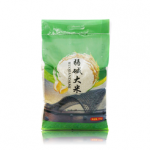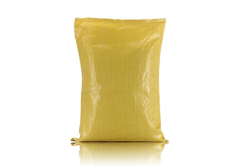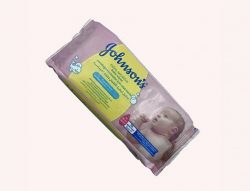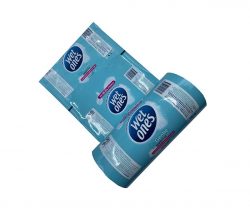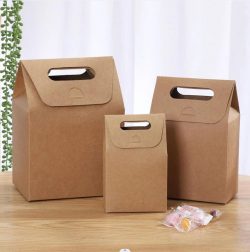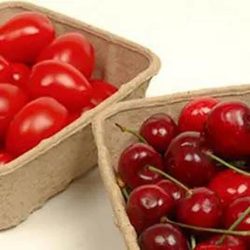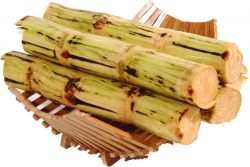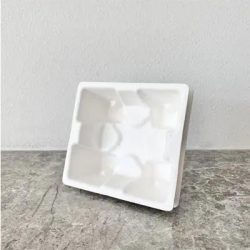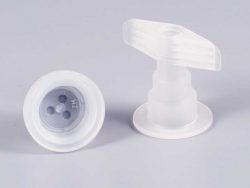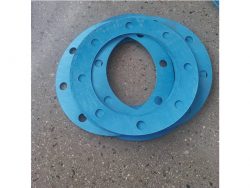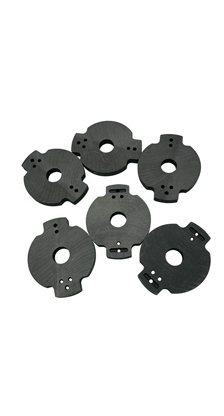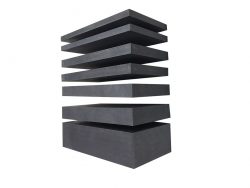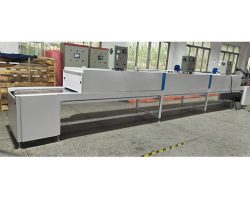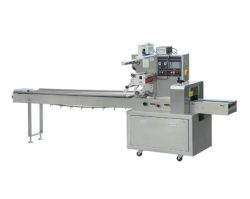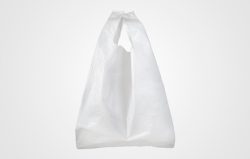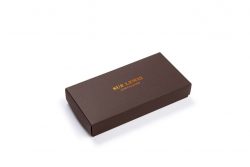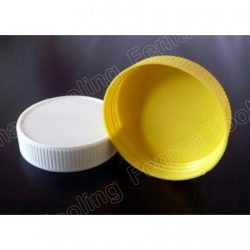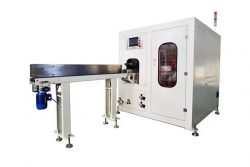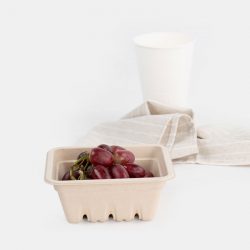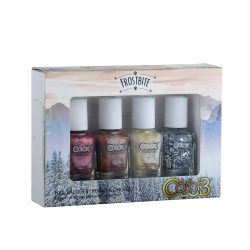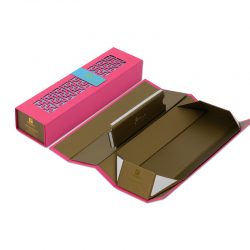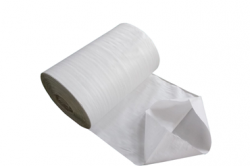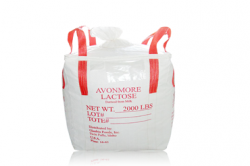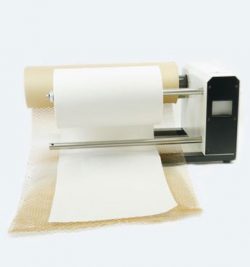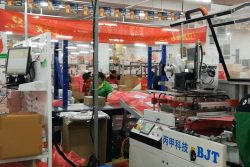Rice Bags
Rice bags are divided into vacuum packages and non-vacuum packages. Most part of non vacuum rice bags are made of polypropylene material, either of nature pp woven fabric or with BOPP film Laminated. Mornpackaging offers both pp woven bags and BOPP bags for rice packing.
Rice bags are requested to be insect-resistant, mildew-proof and well-preserved. And to win the competition in the market, Rice bags need to be in aesthetic appearance for brand promoting. Bopp laminated pp woven bag perfectly offers the features which could meet above requests.
1.Regular sizes of BOPP Laminated polypropylene rice bags
Capacity Size Thickness50kg rice bag 95*55 70-75gsm25kg rice bag 45*75 60-70gsm20kg rice bag 45*70 60-65gsm10kg rice bag 35*55 60-65gsm5 kg rice bag 30*45 60-65gsm
2.Feature of BOPP rice bags
The BOPP film is a good complement to the moisture proof performance of the polypropylene woven bag. This feature makes the bopp laminated pp rice bags not only has the strong tensile strength of the woven bag, but also has the good preservation function of bopp, which significantly prolongs the shelf life of the rice.
3.Gravure printing
Rice bags designs are quite important for the miller or the sellers of rice when facing with market competition. Morn, as a leading rice bags supplier in China, use corona treated BOPP film as the material of gravure printing. Then laminate the film onto polypropylene woven fabric by extrusion compound method, it offers high quality of graphic performance and help rice sellers to promote rice brands well and win the markets.
Specifications of Rice bags
Item
Rice bag
Material composition
100% Virgin PP material.
Thickness
50-100gsm
Width
30cm-150cm
Length
Customized
Capacity
5kgs-100kgs
Top
Straight/zig-zag/Hemmed/Handle
Bottom
Double or Single stitched.
Printing
Gravure printing.Up to 8C.
Mesh
9×9 – 14×14
Plate charge
50USD/Color each side.
MOQ
10,000PCS
Lead time
15 — 25days
Moisture
HDPE/LDPE Liner
Packing
100PCS/Bundle, 10bundles per bale. Or as customized.
Application
For products those need to be packed with multicolor printed packages. Rice, fertilizer, feeds and so on.
Payment terms
1. TT 30% down payment. Balance against B/L copy.2. 100% LC At sight.3. TT 30% down payment, 70% LC At sight.
Bags of rice for sale
Storage condition for Rice.
After a long period of storage, the starch, fat and protein in rice will change due to the influence of temperature and moisture, which will make the rice lose its original color, aroma and taste, reduce its nutritional components and edible quality, and even produce toxic and harmful substances (such as aflatoxin).
Storage time, temperature, moisture and oxygen are the main factors affecting rice aging. In addition, rice varieties, processing accuracy, bran powder content and insect mold damage are also closely related to rice aging. The aging rate of rice is directly proportional to the storage time. The longer the storage time is, the heavier the aging is. High moisture content, high temperature, poor processing accuracy and more bran powder speed up the aging of rice. In order to keep rice fresh and delicious, we should reduce the storage time and keep it cool and dry. The best storage conditions are as follows: low temperature below 15 ℃, relative humidity at 75% and equilibrium moisture of rice at 14.5%.
The storage forms of rice include coarse rice, brown rice and refined white rice. The former two are living and have a long storage period, while the latter is lifeless and not suitable for long-term storage.
Fumigation is usually used in rice warehouse, and families use sun or pepper to prevent and expel insects. The damaged or undeveloped rice grains, such as immature rice grains and insect damaged rice grains, are not only prone to deterioration, but also lead to the deterioration of normal rice. During storage, free fatty acids, protein and starch interact to form a ring structure, which strengthens the hydrogen bond between starch molecules and affects the swelling and softening of rice during cooking. The main factors affecting rice quality deterioration during storage are microorganisms, insect pests and biochemical changes. Among them, biochemical changes are the main causes of rice deterioration, such as the decrease of germination rate, protein degradation and lipid oxidation, which can lead to the loss of fresh rice fragrance and bad “stale rice smell”. Compared with the new rice, the cooked rice made by the old rice is hard, and its viscosity is lower, and the cooking time is longer. In order to restrain these changes, storage conditions should be considered.
The storage and circulation of rice is mostly brown rice. Brown rice often needs to be milled to remove part or all of its cortex in order to get the rice we usually eat. There are two kinds of packaging methods for processed rice: vacuum packaging and non vacuum packaging. Vacuum packaging has higher requirements for the packaging production line, and there is one more vacuum step. The material cost of flexible packaging is relatively high, which is only suitable for high-grade and high value-added rice. Mornpackaging is committed to providing our customers with high-quality non vacuum rice packaging which is mainly pp woven bags or laminated pp woven sacks. The printing effect of flexible packaging can be achieved by using BOPP film laminated pp woven bags, and the cost is low.
When some customers use our rice bags, they see some small holes on them. They are very confused about the function of these small holes. In fact, these small holes are specially designed for rice bags. Because the BOPP film is airtight, the bag with BOPP film can not let the air inside and outside the bag circulate. But rice itself contains a certain amount of water. During storage, especially in some high temperature areas, the water of rice will evaporate. Without those small holes, the air humidity in the bag will increase, which will accelerate the mildew and insect damage of rice.
Tips for home rice storage:
1. Put some dried kelp in the rice. The ratio of rice to kelp is about 100 ∶ 1. Take it out and dry it every 10 days, and then put it back into the rice bowl. This method can be used repeatedly and can effectively prevent rice from mildew and insects.
2. Lay some edible alkali on the bottom of the rice container, and then lay plastic cloth on the top, and then put rice, and cover the container tightly to prevent insects.
3. To pack rice in a sealed bag, you can put the bag directly into the boiled pepper water to soak and dry, and then you can prevent insects when you pack rice. Because the volatile ethanol in Baijiu has the function of killing insects and killing bacteria, it can prevent rice from producing worms.
Put a clean bottle containing Baijiu in the container of rice. The bottle mouth is higher than the rice noodles. If the lid is not covered, the container will be tightly covered, so that the worm can be prevented.



